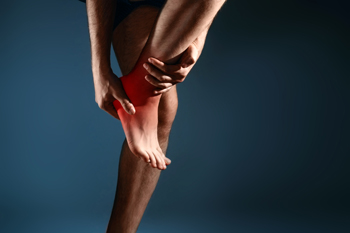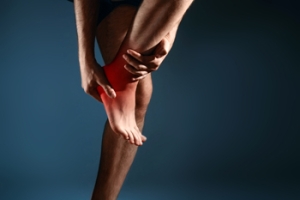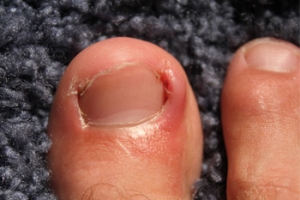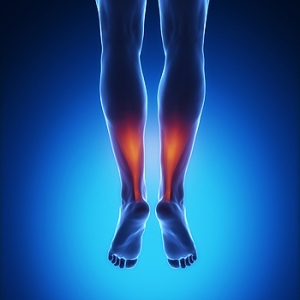Connect With Us
Blog

Foot Surgery May Relieve Pain
 There are several different types of foot conditions that may require surgery if relief is not found using traditional methods of treatment. One type may include bunion surgery in which removal of the protruding bone may aid in diminishing pain that is often associated with it. If you have severe arthritis, you may want to consider fusion surgery, which joins the bones together and this may prevent painful rubbing. A foot condition that is known as hammertoe can cause pain and difficulty in walking, and surgery may be required that can straighten the toes. Plantar fasciitis will typically affect the heel of the foot, and many patients experience severe pain and discomfort if they are afflicted with this foot condition. Surgery is typically successful in removing the portion of the tissue that is causing the pain. If you have these or any other foot conditions, it is suggested to consult with a podiatrist who can help you determine if foot surgery is right for you.
There are several different types of foot conditions that may require surgery if relief is not found using traditional methods of treatment. One type may include bunion surgery in which removal of the protruding bone may aid in diminishing pain that is often associated with it. If you have severe arthritis, you may want to consider fusion surgery, which joins the bones together and this may prevent painful rubbing. A foot condition that is known as hammertoe can cause pain and difficulty in walking, and surgery may be required that can straighten the toes. Plantar fasciitis will typically affect the heel of the foot, and many patients experience severe pain and discomfort if they are afflicted with this foot condition. Surgery is typically successful in removing the portion of the tissue that is causing the pain. If you have these or any other foot conditions, it is suggested to consult with a podiatrist who can help you determine if foot surgery is right for you.
Foot surgery is sometimes necessary to treat a foot ailment. To learn more, contact one of our podiatrists of Family Foot Care of Long Island. Our doctors will assist you with all of your foot and ankle needs.
When Is Surgery Necessary?
Foot and ankle surgery is generally reserved for cases in which less invasive, conservative procedures have failed to alleviate the problem. Some of the cases in which surgery may be necessary include:
- Removing foot deformities like bunions and bone spurs
- Severe arthritis that has caused bone issues
- Cosmetic reconstruction
What Types of Surgery Are There?
The type of surgery you receive will depend on the nature of the problem you have. Some of the possible surgeries include:
- Bunionectomy for painful bunions
- Surgical fusion for realignment of bones
- Neuropathy decompression surgery to treat nerve damage
Benefits of Surgery
Although surgery is usually a last resort, it can provide more complete pain relief compared to non-surgical methods and may allow you to finally resume full activity.
Surgical techniques have also become increasingly sophisticated. Techniques like endoscopic surgery allow for smaller incisions and faster recovery times.
If you have any questions please feel free to contact our office located in Port Jefferson Station, NY . We offer the newest diagnostic and treatment technologies for all your foot and ankle needs.
Foot and Ankle Surgery
When conservative, noninvasive methods prove ineffective, surgery may be selected as the next course of action for the treatment of your foot or ankle condition. A wide number of foot and ankle surgical procedures exist, and it is up to your podiatrist to determine which intervention will be most appropriate and helpful for your case. Some surgical procedures include bunion surgery, fusion, hammertoe surgery, heel spur surgery, metatarsal surgery, nail surgery, neuroma surgery, reconstructive surgery, skin surgery, and tendon surgery. Typically, surgery is turned to as a definitive way to alleviate excessive pain or discomfort and to return your foot to full mobility.
Regardless of the location on the body, all surgical procedures require preoperative testing and examination to ensure the surgery’s success and preferred outcome. A review of your medical history and medical conditions will take place, as will an evaluation of any current diseases, illnesses, allergies, and medications. Tests such as blood studies, urinalyses, EKG, X-rays, and blood flow studies may be ordered. Because the procedure involves the foot and/or ankle, the structures of your feet while walking may also be observed by your podiatrist.
Care post-surgery will depend on the type of surgical procedure performed. Typically, all postoperative care involves rest, ice, compression, and elevation. To improve and ensure a safe recovery, your foot and ankle surgeon may also employ the use of bandages, splints, surgical shoes, casts, crutches, or canes. He will also determine if and when you can bear weight. A timely and thorough recovery is a priority for both you and your podiatrist, and carefully following postoperative instructions can help achieve this.
Causes of Ankle Pain
 Research has indicated there are several different forms of ankle pain. Many people will experience some type of ankle pain throughout their lives, and this may come from a variety of reasons. These may include medical conditions such as arthritis, or from an injury. Ankle sprains are considered to be one of the most common forms of ankle pain, and this typically occurs when the ligaments in the ankle and surrounding areas are overstretched. This may happen as a result of tripping or falling, which may cause the ankle to roll inward toward the ground. Other reasons patients may have ankle pain may include infections in the joints of the ankle, nerve damage, or blood vessels that may be blocked. When ankle pain is first noticed, it’s important to rest the foot by taking the weight off of it. If it appears swollen, elevation may bring a mild form of relief. Please consult with a podiatrist who can properly guide you toward feeling better.
Research has indicated there are several different forms of ankle pain. Many people will experience some type of ankle pain throughout their lives, and this may come from a variety of reasons. These may include medical conditions such as arthritis, or from an injury. Ankle sprains are considered to be one of the most common forms of ankle pain, and this typically occurs when the ligaments in the ankle and surrounding areas are overstretched. This may happen as a result of tripping or falling, which may cause the ankle to roll inward toward the ground. Other reasons patients may have ankle pain may include infections in the joints of the ankle, nerve damage, or blood vessels that may be blocked. When ankle pain is first noticed, it’s important to rest the foot by taking the weight off of it. If it appears swollen, elevation may bring a mild form of relief. Please consult with a podiatrist who can properly guide you toward feeling better.
Ankle pain can have many different causes and the pain may potentially be serious. If you have ankle pain, consult with one of our podiatrists from Family Foot Care of Long Island. Our doctors will assess your condition and provide you with quality foot and ankle treatment.
Ankle pain is any condition that causes pain in the ankle. Due to the fact that the ankle consists of tendons, muscles, bones, and ligaments, ankle pain can come from a number of different conditions.
Causes
The most common causes of ankle pain include:
- Types of arthritis (rheumatoid, osteoarthritis, and gout)
- Ankle sprains
- Broken ankles
- Achilles tendinitis
- Achilles tendon rupture
- Stress fractures
- Tarsal tunnel syndrome
- Plantar fasciitis
Symptoms
Symptoms of ankle injury vary based upon the condition. Pain may include general pain and discomfort, swelling, aching, redness, bruising, burning or stabbing sensations, and/or loss of sensation.
Diagnosis
Due to the wide variety of potential causes of ankle pain, podiatrists will utilize a number of different methods to properly diagnose ankle pain. This can include asking for personal and family medical histories and of any recent injuries. Further diagnosis may include sensation tests, a physical examination, and potentially x-rays or other imaging tests.
Treatment
Just as the range of causes varies widely, so do treatments. Some more common treatments are rest, ice packs, keeping pressure off the foot, orthotics and braces, medication for inflammation and pain, and surgery.
If you have any questions, please feel free to contact our office located in Port Jefferson Station, NY . We offer the newest diagnostic and treatment technologies for all your foot care needs.
Ankle Pain
The ankle joint is the point at which the bones of the leg and foot join. This joint is crucial because it is responsible for the foot’s mobility. Ankle pain is typically the result of inflammation from an injury to bones, joint space, cartilage, ligaments, tendons, or muscles in the area. Commonly associated symptoms with ankle pain are bruising, redness, numbness, stiffness, weakness, and tingling.
The most common causes of ankle pain are sprains and injuries. Ankle sprains are one of the most common musculoskeletal injuries. Sprains occur when the ligaments of the ankle become partially or completely torn due to sudden stretching. Sprains can occur on either the inner or outer sides of the ankle joint. Usually, these injuries occur when the ankle is twisted in an activity by stepping off an uneven surface. More specific causes include rheumatoid arthritis, gout, osteoarthritis, and Achilles tendonitis.
If you are experiencing ankle pain, you should consult with your podiatrist to choose the best method of care. Your doctor will conduct an examination of your ankle to determine the underlying cause of the pain.
Causes of Neuropathy
 If you are experiencing a tingling sensation or a loss of feeling in your feet, you may have a condition that is known as neuropathy. It may be indicative of general health issues in the body that may cause the peripheral nerves to become damaged. Typical symptoms may include muscle weakness, or burning sensations. Possible causes of neuropathy may originate from diabetes and autoimmune disorders, in addition to certain types of chemotherapy. Patients who are older or are chronically ill may find they have symptoms of neuropathy, or it may have developed as a result of an injury. Research has shown treatments may vary based on the source of this condition, and steps can be implemented that may achieve a moderate level of relief. If the neuropathy is caused by diabetes, it is suggested to lower the insulin levels in the blood. Additionally, taking the correct supplements may heal a vitamin deficiency, which may be a cause of this condition. If you have any of these symptoms, it is advised to speak to a podiatrist who can guide you toward proper treatment.
If you are experiencing a tingling sensation or a loss of feeling in your feet, you may have a condition that is known as neuropathy. It may be indicative of general health issues in the body that may cause the peripheral nerves to become damaged. Typical symptoms may include muscle weakness, or burning sensations. Possible causes of neuropathy may originate from diabetes and autoimmune disorders, in addition to certain types of chemotherapy. Patients who are older or are chronically ill may find they have symptoms of neuropathy, or it may have developed as a result of an injury. Research has shown treatments may vary based on the source of this condition, and steps can be implemented that may achieve a moderate level of relief. If the neuropathy is caused by diabetes, it is suggested to lower the insulin levels in the blood. Additionally, taking the correct supplements may heal a vitamin deficiency, which may be a cause of this condition. If you have any of these symptoms, it is advised to speak to a podiatrist who can guide you toward proper treatment.
Neuropathy
Neuropathy can be a potentially serious condition, especially if it is left undiagnosed. If you have any concerns that you may be experiencing nerve loss in your feet, consult with one of our podiatrists from Family Foot Care of Long Island. Our doctors will assess your condition and provide you with quality foot and ankle treatment for neuropathy.
What Is Neuropathy?
Neuropathy is a condition that leads to damage to the nerves in the body. Peripheral neuropathy, or neuropathy that affects your peripheral nervous system, usually occurs in the feet. Neuropathy can be triggered by a number of different causes. Such causes include diabetes, infections, cancers, disorders, and toxic substances.
Symptoms of Neuropathy Include:
- Numbness
- Sensation loss
- Prickling and tingling sensations
- Throbbing, freezing, burning pains
- Muscle weakness
Those with diabetes are at serious risk due to being unable to feel an ulcer on their feet. Diabetics usually also suffer from poor blood circulation. This can lead to the wound not healing, infections occurring, and the limb may have to be amputated.
Treatment
To treat neuropathy in the foot, podiatrists will first diagnose the cause of the neuropathy. Figuring out the underlying cause of the neuropathy will allow the podiatrist to prescribe the best treatment, whether it be caused by diabetes, toxic substance exposure, infection, etc. If the nerve has not died, then it’s possible that sensation may be able to return to the foot.
Pain medication may be issued for pain. Electrical nerve stimulation can be used to stimulate nerves. If the neuropathy is caused from pressure on the nerves, then surgery may be necessary.
If you have any questions, please feel free to contact our office located in Port Jefferson Station, NY . We offer the newest diagnostic and treatment technologies for all your foot care needs.
Neuropathy
Neuropathy is the weakness, numbness, and pain in the hands and feet due to damage to the peripheral nerves. The peripheral nerves are responsible for sending information from the brain and spinal cord to the rest of your body. Causes of Neuropathy include: traumatic injuries, infections, metabolic problems, exposure to toxins, and diabetes.
Diabetes is the most common cause, with more than half of the diabetic population developing some type of neuropathy. There are several types of neuropathy and they vary based on the damage of the nerves. Mononeuropathy is classified as only one nerve being damaged. When multiple nerves are affected, it is referred as polyneuropathy. One of the types of polyneuropathy is distal symmetric polyneuropathy. It is the most common for people with diabetes and starts when the nerves furthest away from the central nervous begin to malfunction. The symptoms begin with pain and numbness in the feet and then they travel up to the legs. A rarer form of polyneuropathy is acute symmetrical peripheral neuropathy, which is a severe type that affects nerves throughout the body and is highly associated with Guillain-Barre syndrome, an autoimmune disorder that attacks the peripheral nervous system and can be fatal. Although there are many types of neuropathy, most of them share the same symptoms such as pain, extreme sensitivity to touch, lack of coordination, muscle weakness, dizziness, and digestive problems. Since neuropathy affects the nerves, those affected should be careful of burns, infection and falling, as depleted sensations disguise such ailments.
The best way to prevent neuropathy is to manage any medical conditions such as diabetes, alcoholism, or rheumatoid arthritis. Creating and managing a healthy lifestyle can also go a long way. Having a healthy diet full of fruits, vegetables, whole grains and lean protein can keep the nerves healthy. These types of food have the nutrients to prevent neuropathy. Regularly exercising can help as well, but it is best to consult with a doctor about the right amount. In addition to diet and exercise, avoiding risk factors will also prevent neuropathy. This includes repetitive motions, cramped positions, exposure to toxic chemicals, smoking and overindulging on alcohol.
Symptoms of an Ingrown Toenail
 If the nail on the big toe should grow into the surrounding skin, you may have what is known as an ingrown toenail. Common reasons why this painful condition should occur may include improper nail trimming and wearing shoes which do not fit correctly. Some patients have toes that are deformed, and this can exert excess pressure on the nail. There are several symptoms that may accompany this ailment, including redness, tenderness, swelling, or a possible discharge coming from the affected nail. Soaking the nail in warm water may lead to partial relief, in addition to gently massaging the nail and surrounding area. If you are afflicted with diabetes or nerve damage, it is important to speak to a podiatrist as quickly as possible who can aid in treating the nail and possibly preventing an infection from developing.
If the nail on the big toe should grow into the surrounding skin, you may have what is known as an ingrown toenail. Common reasons why this painful condition should occur may include improper nail trimming and wearing shoes which do not fit correctly. Some patients have toes that are deformed, and this can exert excess pressure on the nail. There are several symptoms that may accompany this ailment, including redness, tenderness, swelling, or a possible discharge coming from the affected nail. Soaking the nail in warm water may lead to partial relief, in addition to gently massaging the nail and surrounding area. If you are afflicted with diabetes or nerve damage, it is important to speak to a podiatrist as quickly as possible who can aid in treating the nail and possibly preventing an infection from developing.
Ingrown toenails can become painful if they are not treated properly. For more information about ingrown toenails, contact one of our podiatrists of Family Foot Care of Long Island. Our doctors can provide the care you need to keep you pain-free and on your feet.
Ingrown Toenails
Ingrown toenails occur when a toenail grows sideways into the bed of the nail, causing pain, swelling, and possibly infection.
Causes
- Bacterial infections
- Improper nail cutting such as cutting it too short or not straight across
- Trauma to the toe, such as stubbing, which causes the nail to grow back irregularly
- Ill-fitting shoes that bunch the toes too close together
- Genetic predisposition
Prevention
Because ingrown toenails are not something found outside of shoe-wearing cultures, going barefoot as often as possible will decrease the likeliness of developing ingrown toenails. Wearing proper fitting shoes and using proper cutting techniques will also help decrease your risk of developing ingrown toenails.
Treatment
Ingrown toenails are a very treatable foot condition. In minor cases, soaking the affected area in salt or antibacterial soaps will not only help with the ingrown nail itself, but also help prevent any infections from occurring. In more severe cases, surgery is an option. In either case, speaking to your podiatrist about this condition will help you get a better understanding of specific treatment options that are right for you.
If you have any questions please feel free to contact our office located in Port Jefferson Station, NY . We offer the newest diagnostic and treatment technologies for all your foot and ankle needs.
Ingrown Toenail Care
An ingrown toenail is a nail that has curved downward and grows into the skin. This typically occurs at the nail borders, or the sides of the nail. As a result, pain, redness, swelling, and warmth may occur in the toe. If a break in the skin forms due to the ingrown nail, bacteria may enter and cause an infection in the area; this is typically characterized by a foul odor and drainage.
Ingrown toenails have multiple reasons for developing. In many instances, the condition is a result of genetics and is inherited. The most common cause, however, is improper trimming; cutting the toenails too short forces the skin beside the nail to fold over. An ingrown toenail can also develop due to trauma, such as stubbing the toe, having an object fall on the toe, or participating in activities that involve repeated kicking or running. Wearing shoes that are too tight or too short can also cause ingrown toenails.
Treatment for an ingrown toenail varies between patients and the severity of the condition. Milder cases that don’t involve infection or other medical conditions can benefit from soaking the feet in room-temperature water and gently massaging the side of the nail. In most cases, however, it is best to see your podiatrist for thorough and proper treatment. After examining your toe, your podiatrist may prescribe oral antibiotics to clear the infection if one is present. Surgical removal of either a portion of the nail or the entire nail may also be considered. In some cases, complete removal or destruction of the nail root may be required. Most patients who undergo nail surgery experience minimal pain afterward and can return to normal activity the following day.
Ingrown toenails can be prevented with proper nail trimming and by avoiding improper-fitting shoes. When cutting the toenails, be sure that you are cutting in a straight line and avoid cutting them too short. Shoes should not be too short or tight in the toe box.
Symptoms of an Achilles Tendon Injury
 If you experience pain in your calf muscle, you may have injured your Achilles tendon. It connects the heel bone to the calf muscles, and is known to be the largest tendon in the body. An injury may occur as a result of partaking in specific sporting activities. Additionally, there may be medical conditions that may cause an Achilles tendon injury, which may include gout or other forms of arthritis. There are noticeable symptoms that often accompany this type of injury. Some patients feel pain in the heel area of the foot, and may have difficulty in pointing the toes downward. After a correct diagnosis is performed that confirms a torn Achilles tendon, correct treatment may begin, which may include surgery or non-surgical options. If you feel you may have ruptured your Achilles tendon, it is advised that you speak to a podiatrist who can properly treat this condition.
If you experience pain in your calf muscle, you may have injured your Achilles tendon. It connects the heel bone to the calf muscles, and is known to be the largest tendon in the body. An injury may occur as a result of partaking in specific sporting activities. Additionally, there may be medical conditions that may cause an Achilles tendon injury, which may include gout or other forms of arthritis. There are noticeable symptoms that often accompany this type of injury. Some patients feel pain in the heel area of the foot, and may have difficulty in pointing the toes downward. After a correct diagnosis is performed that confirms a torn Achilles tendon, correct treatment may begin, which may include surgery or non-surgical options. If you feel you may have ruptured your Achilles tendon, it is advised that you speak to a podiatrist who can properly treat this condition.
Achilles tendon injuries need immediate attention to avoid future complications. If you have any concerns, contact one of our podiatrists of Family Foot Care of Long Island. Our doctors can provide the care you need to keep you pain-free and on your feet.
What Is the Achilles Tendon?
The Achilles tendon is a tendon that connects the lower leg muscles and calf to the heel of the foot. It is the strongest tendon in the human body and is essential for making movement possible. Because this tendon is such an integral part of the body, any injuries to it can create immense difficulties and should immediately be presented to a doctor.
What Are the Symptoms of an Achilles Tendon Injury?
There are various types of injuries that can affect the Achilles tendon. The two most common injuries are Achilles tendinitis and ruptures of the tendon.
Achilles Tendinitis Symptoms
- Inflammation
- Dull to severe pain
- Increased blood flow to the tendon
- Thickening of the tendon
Rupture Symptoms
- Extreme pain and swelling in the foot
- Total immobility
Treatment and Prevention
Achilles tendon injuries are diagnosed by a thorough physical evaluation, which can include an MRI. Treatment involves rest, physical therapy, and in some cases, surgery. However, various preventative measures can be taken to avoid these injuries, such as:
- Thorough stretching of the tendon before and after exercise
- Strengthening exercises like calf raises, squats, leg curls, leg extensions, leg raises, lunges, and leg presses
If you have any questions please feel free to contact our office located in Port Jefferson Station, NY . We offer the newest diagnostic tools and technology to treat your foot and ankle needs.
Achilles Tendon Injuries
The Achilles tendon is the largest tendon in the body; it is a tough band of fibrous tissue that stretches from the bones of the heel to the calf muscles. This tendon is what allows us to stand on our toes while running, walking, or jumping, it is common for this tendon to become injured. In severe cases, the Achilles tendon may become partially torn or completely ruptured. However, this tendon is susceptible to injury because of its limited blood supply and the high level of tension it endures.
The people who are more likely to suffer from Achilles tendon injuries are athletes who partake in activities that require them to speed up, slow down, or pivot. Consequently, athletes who engage in running, gymnastics, dance, football, baseball, basketball, or tennis are more likely to suffer from Achilles tendon injuries. Additionally, there are other factors that may make you more prone to this injury. People who wear high heels, have flat feet, tight leg muscles or tendons, or take medicines called glucocorticoids are more likely to have Achilles tendon injuries.
A common symptom of an Achilles tendon injury is pain above the heel that is felt when you stand on your toes. However, if the tendon is ruptured, the pain will be severe, and the area may become swollen and stiff. Other symptoms may be reduced strength in the lower ankle or leg area, and reduced range of motion in the ankle. When the Achilles tendon tears, there is usually a popping sound that occurs along with it. People who have acute tears or ruptures may find walking and standing to be difficult.
If you suspect you have injured your Achilles tendon, you should see your podiatrist to have a physical examination. Your podiatrist will likely conduct a series of tests to diagnose your injury including a “calf-squeeze” test. Calf squeeze tests are performed by first squeezing the calf muscle on the healthy leg. This will pull on the tendon and consequently cause the foot to move. Afterward, the same test will be performed on the injured leg. If the tendon is torn, the foot won’t move because the calf muscle won’t be connected to the foot.
Blog Archives
- April 2025
- March 2025
- February 2025
- January 2025
- December 2024
- November 2024
- October 2024
- September 2024
- August 2024
- July 2024
- June 2024
- May 2024
- April 2024
- March 2024
- February 2024
- January 2024
- December 2023
- November 2023
- October 2023
- September 2023
- August 2023
- July 2023
- June 2023
- May 2023
- April 2023
- March 2023
- February 2023
- January 2023
- December 2022
- November 2022
- October 2022
- September 2022
- August 2022
- July 2022
- June 2022
- May 2022
- April 2022
- March 2022
- February 2022
- January 2022
- December 2021
- November 2021
- October 2021
- September 2021
- August 2021
- July 2021
- June 2021
- May 2021
- April 2021
- March 2021
- February 2021
- January 2021
- December 2020
- November 2020
- October 2020
- September 2020
- August 2020
- July 2020
- June 2020
- May 2020
- April 2020
- March 2020
- February 2020
- January 2020
- December 2019
- November 2019
- October 2019
- September 2019
- August 2019
- July 2019
- June 2019
- May 2019
- April 2019
- March 2019
- February 2019
- January 2019
- December 2018
- November 2018
- October 2018
- September 2018
- August 2018
- July 2018
- June 2018
- May 2018
- April 2018
- March 2018
- February 2018
- January 2018
- December 2017
- November 2017
- October 2017
- September 2017





